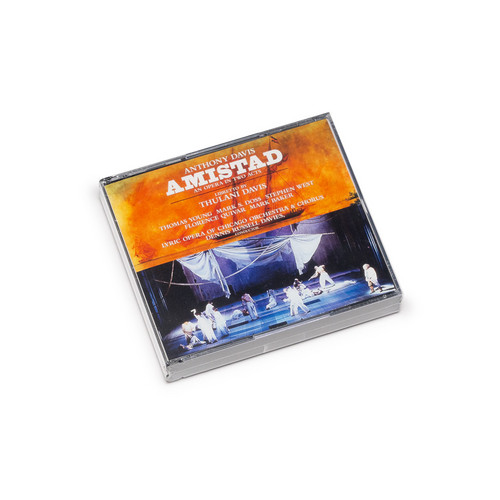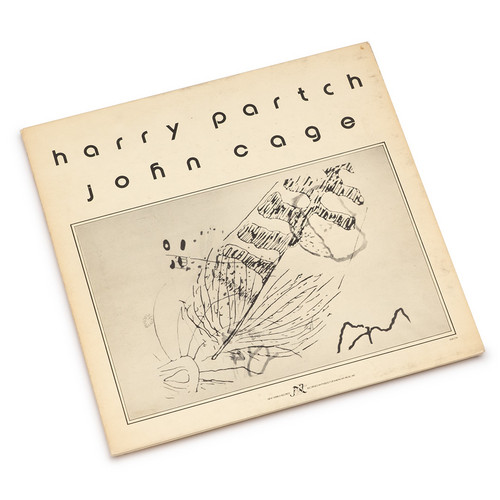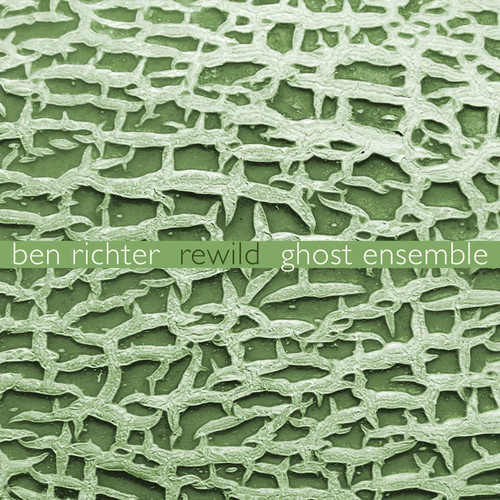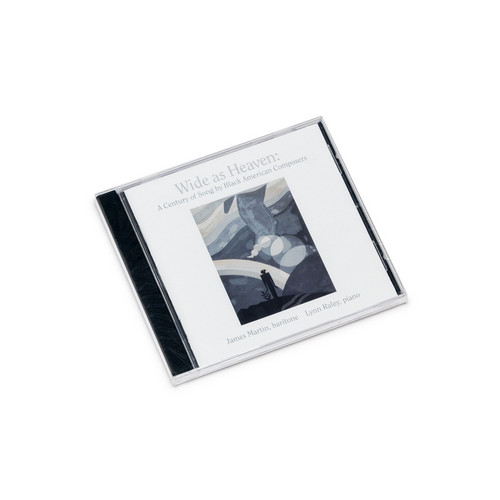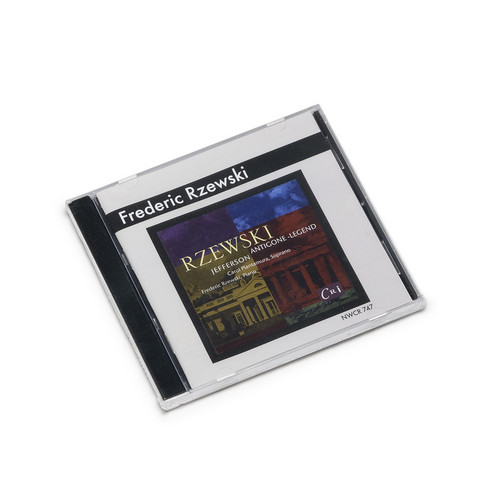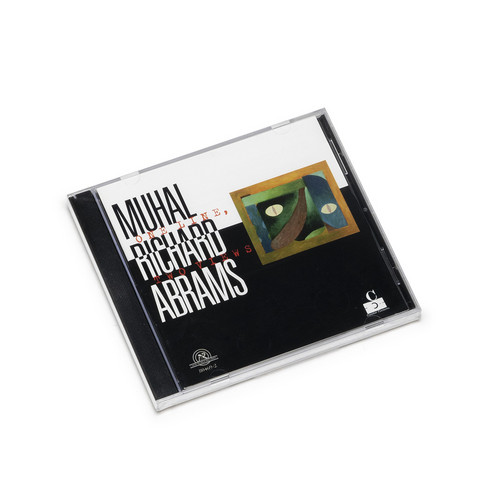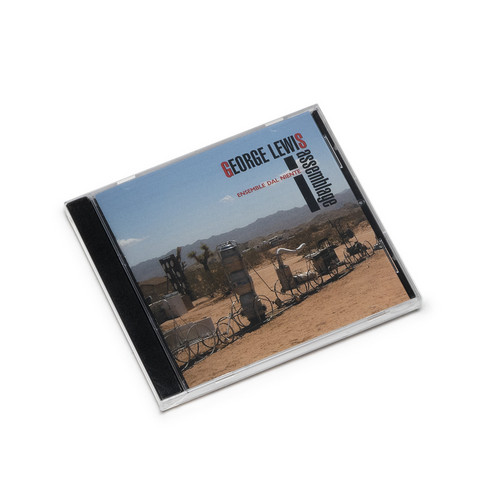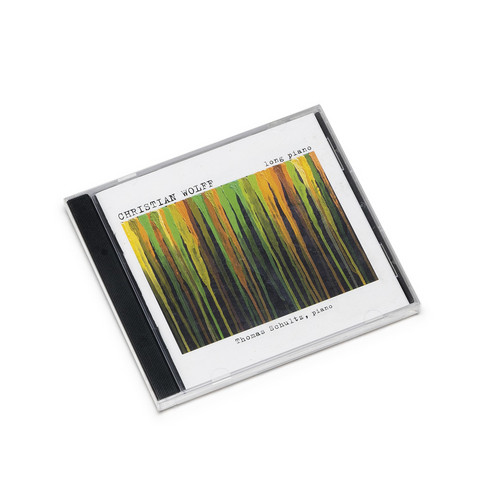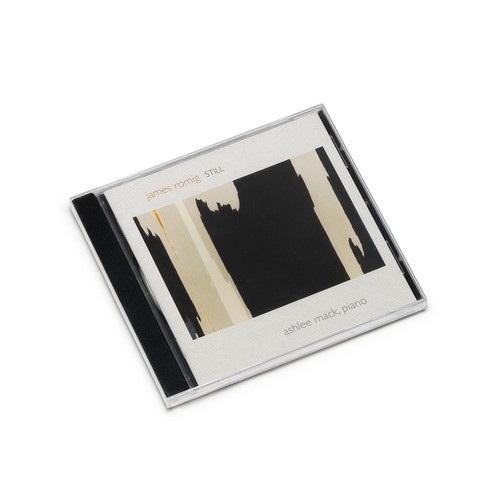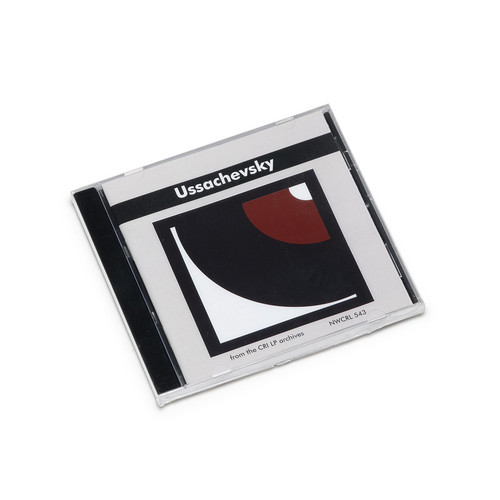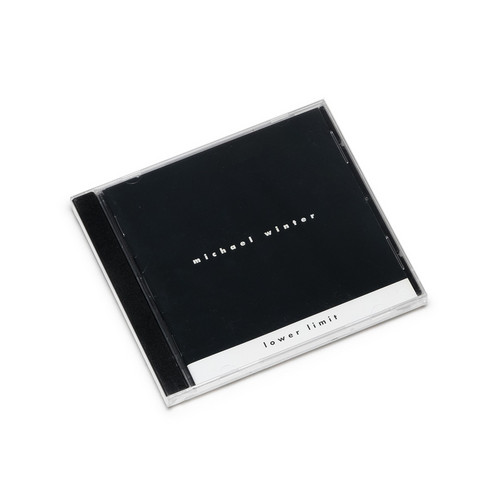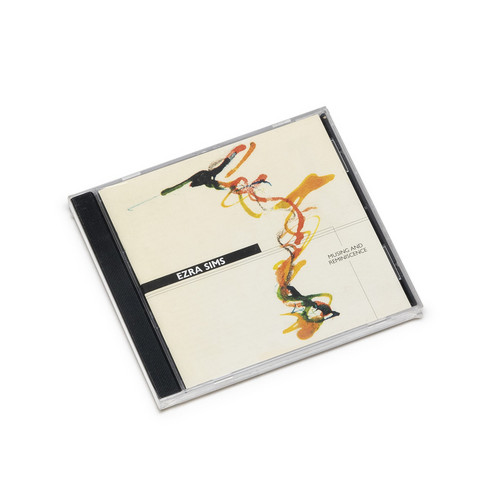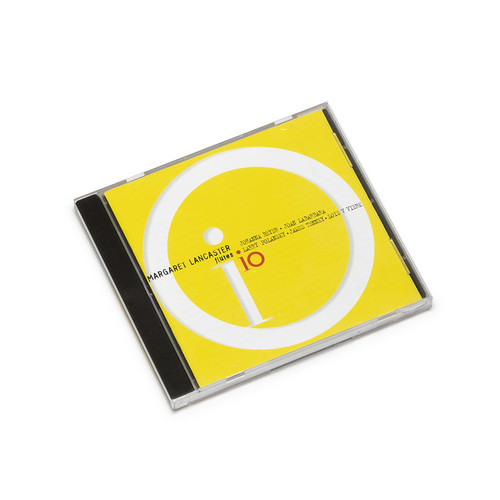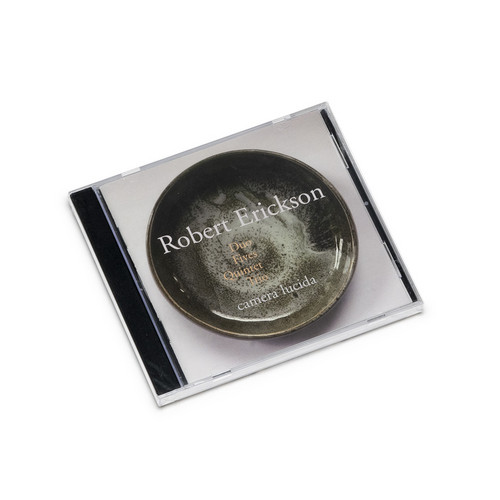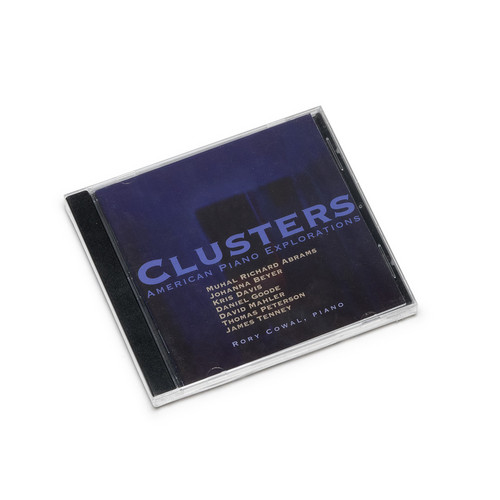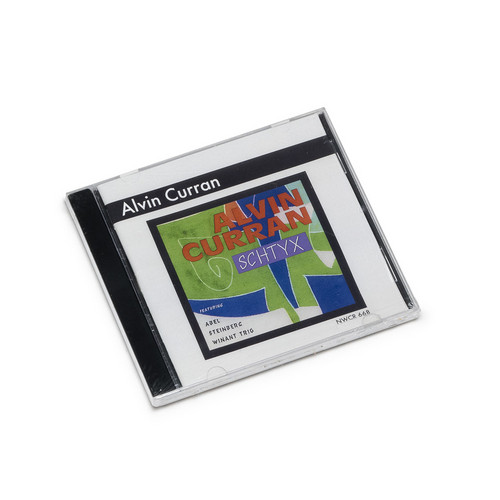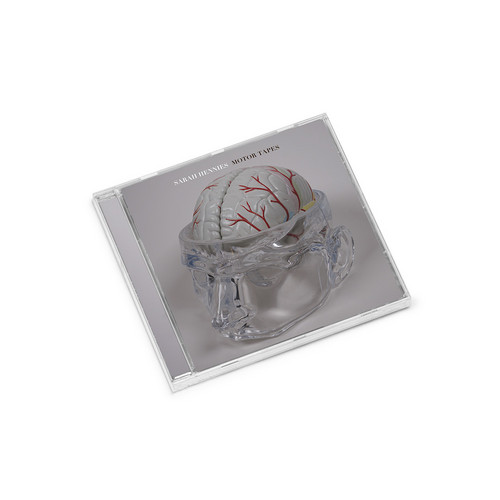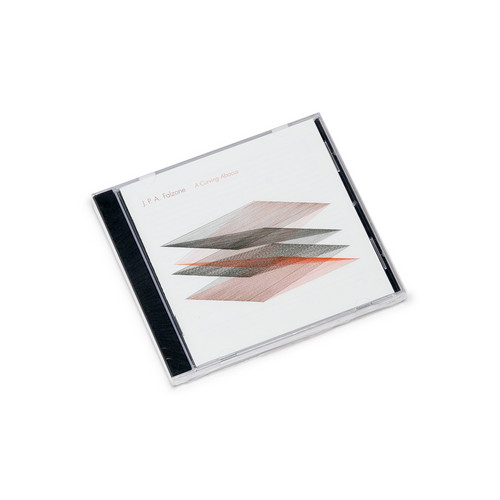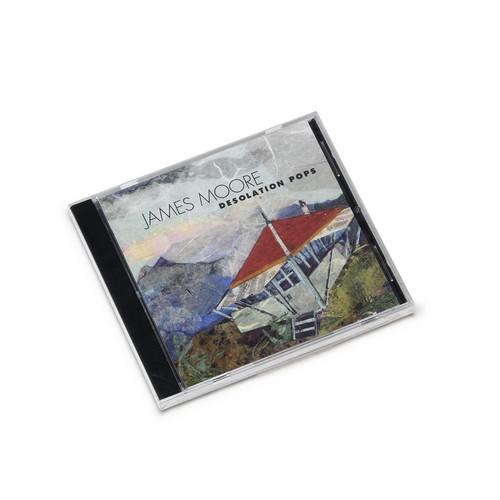★New World Records
Amistad
“Amistad is an opera that was ten years in the making. Thulani and I first discussed the idea of making an opera on the Amistad Rebellion in 1986, after the premiere of our opera X: The Life and Times of Malcolm X. We were drawn to the drama of the story, a successful uprising of captives on a slave ship, and the implications of the Amistad incident in an understanding of ourselves and the American experience. Through the Amistad, we could revisit the story of the Middle Passage, the contradicti…
The Music of John Cage and Harry Partch
Superb selection of historical recordings (1947 to 1973) of music by two undisputed masters of the American avant-garde.
Rewild
Inspired by the perspectives and timescales of nonhuman beings and distant orders of magnitude in the universe of life, Rewild seeks new strata in musical parameters, exploring the uncanny zones at which pitch becomes rhythm, harmonic interval becomes beating rate, and timbres morph over time. Like a giant body or ecosystem slowly breathing, Rewild’s constantly transforming sound-world orients temporal perception toward global listening. By offering an aural metaphor for the interacting gradual …
Wide as Heaven: A Century of Song by Black American Composers
"This collection of songs represents one hundred years of music produced by American composers and poets of color—the best of us. Some identify(ied) as Negro, some African-American, some Black, some men, some women, and some insisted they were beyond classification, adamant that their work speak for itself. Unfortunately, too many of these voices have been stifled from inclusion in our American story thus far. But the time is right, and the fruit is ripe for the picking. The harvest has come in,…
Antigone-Legend / Jefferson
Carol Plantamura and Frederic Rzewski met in 1965 when they were both at the Center for the Creative and Performing Arts at the State University of New York (SUNY), Buffalo. After beginning to work together in 1966, they collaborated in Rome as members of the improvising collective Musica Elettronica Viva, and from 1966 to 1970 they performed together throughout Italy, Belgium, the Netherlands, and Germany as a piano-vocal duo. Jefferson was written for Carol Plantamura in 1970 as part of a seri…
One Line, Two Views
One Line, Two Views features seven compositions for nine-piece ensemble by Muhal Richard Abrams. Works range from the subtle textural and tonal explorations of "Textures," "Hydepth," and the title track to the hard bop revisitations of "11 over 4" and "The Prism 3." The disc is rounded out by an ebullient, joyous, and celebratory "Tribute to Julius Hemphill and Don Pullen" and the blues-tinged "Ensemble Song." Abrams opts for unique instrumentation including violin, harp, and accordio…
Assemblage
George Lewis (b 1952) combines an astonishing level of creativity with trenchant critiques of many traditional conceptions about experimental music. The four compositions on this album reference a wide range of ideas, from rhetoric in Ancient Rome to actor network theory, and the album's eponymous composition finds its grounding in the concept of the "assemblage," (or agencement in French) a pragmatic, material, non-teleological approach to composition. Among the album's compositions, Mnemosis (…
Long Piano
The melodic and, in the case of the solo piano music, timbral materials from which Christian Wolff's (b 1934) music is made are rarely unusual; these are ordinary, everyday things. However, Wolff's rhythmic invention is of great range and variety: complex polyrhythms, speech-like-rhythms, the music flowing at a freely fluctuating rate or proceeding in a plain, straightforward manner, silences. This mix of unusual and ordinary results in a music unlike any other. And, in a piece of such length as…
Still
James Romig (b 1971) endeavors to create music that reflects the intricate complexity of the natural world, where fundamental structures exert influence on both small-scale iteration and large-scale design, obscuring boundaries between form and content. Still, for solo piano (2016), inspired by the paintings of Clyfford Still, comprises 43 individual "Iterations" that may be performed in a continuous unbroken strand of music that lasts approximately 55 minutes, or it may be divided into smaller …
Dialogues and Contrasts / Colloquy
The title Dialogues and Contrasts describes the nature of the exchange which takes place between the performer and the materials committed to tape. In the first movement the exchange is more in the nature of an argument. Though initially each side appears to favor an independent thematic course, as the movement progresses the performers engage in direct response to the statements on tape. The second movement is more subdued and reflective, with many solo passages, particularly from the French ho…
Lower Limit
The immersive sonic textures that characterize Michael Winter's (b 1980) music are crafted from comprehensive lists of data, with each composition encompassing a musical question that is addressed algorithmically. A performance lasts for as long as it takes to "answer" the question, expressing all results as efficiently as possible. Winter leaves room for unanticipated results by keeping things open, notably in the instrumentation, which, rather than specifying instruments, tends to designate ce…
Musing And Reminiscence
Ezra Sims (1928-2015) was known mainly as a composer of microtonal music. Surrounded by world-class performers who championed his music, he produced a large number of chamber and solo, choral, and two orchestral works. With his unwavering commitment to his unique vision, he made an enormous contribution to modern music. This retrospective spans his entire career, almost fifty years of compositional activity, and is an excellent introduction to his very distinctive sound world. Sims’s lyricism an…
Sonatas
Lejaren Hiller (1924-1994) is, understandably, best known for his computer-assisted compositions and works utilizing electronics. The three pieces included in this collection span a crucial fifteen-year period in Hiller's career. The first was written two years before Quartet No. 4 for Strings, The ILLIAC Suite. The second work was written three years into his time as a music professor at the University of Illinois, while the final sonata in this collection was written during his second year at …
Io
Born in Michigan but for most of his life a true Californian, Robert Erickson (1917-1997) had a reputation as a maverick. His musical path was never a straight line, nor, really, a line at all but a landscape, with ranges of features rather than mere points of interest. He was a profound and original musical thinker who embraced the expressive possibilities of all music, from the Western classics and moderns of his own early education to Indian and Balinese traditions and all manner of contempor…
Duo, Fives, Quintet, Trio
Born in Michigan but for most of his life a true Californian, Robert Erickson (1917-1997) had a reputation as a maverick. His musical path was never a straight line, nor, really, a line at all but a landscape, with ranges of features rather than mere points of interest. He was a profound and original musical thinker who embraced the expressive possibilities of all music, from the Western classics and moderns of his own early education to Indian and Balinese traditions and all manner of contempor…
Clusters: American Piano Explorations
Rory Cowal is a distinctive pianist, one who draws liberally on classical chops, ample experience with improvisation, and a predilection for the new and uncharted. This makes him especially attractive to composers who wish to blur the boundaries between traditional styles and genres. A musical adventurer at heart, Cowal seems drawn to challenging and unusual projects. The eight pieces on this CD reflect this willingness to experiment, to not just play the same old (now canonic) warhorses of the …
Schtyx
"All his life, my father played the trombone and sang; just before he died, he became a music critic. He said "Chords, yes Alvin, but it needs more melody." SCHTYX was the answer. It opens with a dotted quarter at 50. From the start, implications appear and never cease. They remain open for business like a river. The melody, first thought terminal, is recycled on a child's buzz saw, but then reappears as a mensch. Ten minutes later, it turns up a 5/4 Waltz scrutinized by a group of unemployed ha…
Motor Tapes
Closing the achingly long four years wait since her last full-length, the American composer/percussionist Sarah Hennies returns with “Motor Tapes”, her second release with New World Records. Comprising three astounding new pieces, made in collaboration with three acclaimed ensembles - ensemble 0, Talea Ensemble, and Ensemble Dedalus - that simultaneously encounter her moving into new uncharted territory, while remaining rooted in her singular practice, exploring musical, sociopolitical, and psyc…
A Curving Abacus
In 1968, Steve Reich coined the term Process Music to describe compositional designs that resemble “pulling back a swing, releasing it, and observing it gradually come to rest,” explaining that “once the musical process is set up and loaded it runs by itself.” In the mid-1970s, Brian Eno began using the expression Ambient Music to refer to atmospheric compositions that “must be able to accommodate many levels of listening attention without enforcing one in particular,” music that “must be as ign…
Desolation Pops
"James Moore (b. 1979) is a composer with an eye toward the world of games and experimental theater. He’s an electric guitarist who’s willing and eager to treat his instrument as a playground, not a reverent, static tradition. He’s a tinkerer, a charmer, and a fella who’s always up for another round at the bar of wacky ideas and intellectual questioning. He’s excited for new and unexpected opportunities for collaboration, but always maintains a voice that seems to stay recognizably his own throu…
